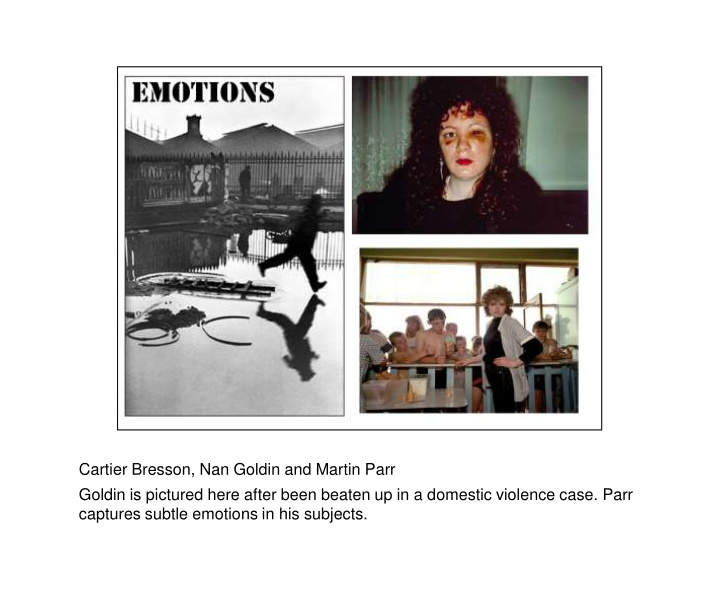



Cartier Bresson, Nan Goldin and Martin Parr Goldin is pictured here after been beaten up in a domestic violence case. Parr captures subtle emotions in his subjects.
Anger, fear, happiness, paranoia and annoyance. All emotions can be captured by facial movement.
Sometimes photography can capture a really poignant memory or show us emotion on mass
Egon Schiele self portrait, Kathe Kollwitz- “Widows and orphans”, “The Survivors” and “Self Portrait with Hand on Head” Bottom Left is by an contemporary digital illustrator.
Peter Paul Rubens is well known for his ability to paint emotional scenes. The subjects almost become caricatures. Descent from the cross (1612-14) shows a real thought for composition. The dramatic diagonal created by he body of Christ and his shroud deliberately emphasises the fragility of his corpse and the profound remorse felt by his loved ones.
Francisco de Goya : The Great He-Goat or Witches Sabbath 1821 The Prison 1814 Don’t say the title and see if they can guess where the picture is situated.
Modigliani elongates his subject’s features to provoke a heightened sense of emotion. Lucien Freud’s drawing provokes an extreme emotion. What is it?
Edvard Munch- “The Scream” and “The Kiss” Emotions are starkly painted by Munch. Realism vanishes and a nightmarish abstract starts to take over. The figure seems masked, the expression exaggerated. The colours dynamically contrast creating a heightened sense of unease.
Paul Gaugin painted these whilst travelling in Tahiti. The colour of the background seems tropically hot. Lots of contrasting and harmonious colours producing harmony in the picture.
Recommend
More recommend